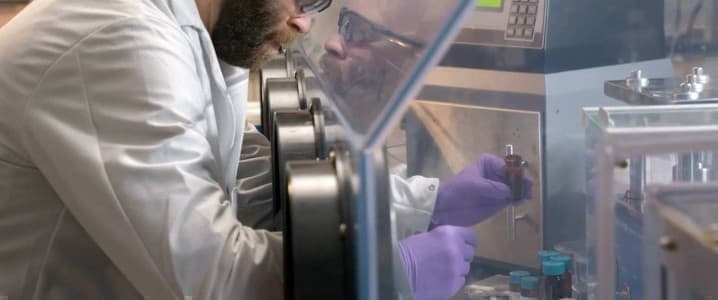While climate activists call on oil and gas giants to ‘keep it in the ground,’ many products of our modern way of life – from clothing and cosmetics to detergents and medicines – come from the biggest industrial consumer of both oil and gas - the chemical sector. The chemicals industry has heeded calls for emissions reduction and is looking at ways to make the processing of fossil fuel raw materials less carbon-intensive.
But proponents of the so-called green chemistry believe that much more can be done to make the industry sustainable, avoiding unintended consequences such as harm to people and the environment while at the same time reducing waste, conserving energy, and discovering replacements for hazardous substances.
Green, or sustainable, chemistry could undermine Big Oil’s petrochemical ambitions, especially in an increasingly environment-conscious world.
Environment-conscious or not, consumers will never stop needing the many products of the chemicals industry – from waterproof jackets and the dye for trendy new blue jeans to computer chips and disinfectants.
The chemical sector is the largest industrial consumer of both oil and gas, accounting for 15 percent, or 13 million bpd, of total primary demand for oil on a volumetric basis and 9 percent of gas, according to the International Energy Agency (IEA).
Chemical sector emissions need to peak in the next few years and decline towards 2030 to stay on track with the Sustainable Development Scenario (SDS), according to the agency.
Related: Natural Gas Prices Plunge On Souring Demand, LNG Exports
Green chemistry has the potential to not only reduce emissions from the sector. It can also make the substances in all those products with minimum waste, recyclable, and degradable, according to Paul Anastas, the director of Yale University’s Center for Green Chemistry and Green Engineering and the person dubbed ‘the Father of green chemistry’ after he came up with the 12 principles of green chemistry in a 1998 book, ‘Green Chemistry: Theory and Practice.’ The first principle on the list is prevention, saying that “it is better to prevent waste than to treat or clean up waste after it has been created.”
So far, the industry has been mostly focused on the narrow specific performance of a chemical, while a sustainable future industry would look into all effects of a chemical on the environment, people’s health, and all other potential unintended, and possibly harmful, consequences, Anastas says.
“So green chemistry is really a way of keeping all of those technological miracles, those innovations, without all of those unintended consequences,” he told CNBC’s Sustainable Energy program.
Earlier this year, Anastas said, commenting on a paper he co-authored, that “Nature has given us renewable materials more plentiful than all the output of every petrochemical refinery combined.”
Every sector of the chemicals industry uses some form of green chemistry, be it recycling or using waste as a resource, but the sector hasn’t adopted yet the sustainable principles systematically, Anastas says.
Anastas and other green engineering and green chemistry professors and scientists said in a paper this year that chemicals should be rated not only by how well they function, but also whether those chemicals are sustainable, recyclable, and non-toxic throughout their entire life cycle. Related: Oil Prices Slide As Libya Restarts Production
Progress has been made, according to the scientists, but Anastas says that “The astounding accomplishments of green chemistry and green engineering thus far pale in comparison to the power and the potential of the field in the future.”
Scientists are constantly working on finding sustainable alternatives to chemical processes and materials.
Scientists at the Max Planck Institute of Colloids and Interfaces in Potsdam, Germany, for example, have developed a green approach to the selective synthesis of p-xylene pXL, one of the most important building blocks in the polymer industry, from renewable raw materials. Production of pXL is still based on fossil raw materials.
Green chemistry is already part of many consumer products. Adidas, for example, makes shoes from recycled plastic waste.
ADVERTISEMENT
San Diego-based Genomatica has created natural butylene glycol, commonly used in cosmetics for moisture retention and as a carrier for plant extracts. Butylene glycol is traditionally produced from fossil fuels, but Genomatica produced by fermenting E. coli using renewable sugars, for which it received U.S. Environmental Protection Agency’s (EPA) award in the 2020 Green Chemistry Challenge Awards.
Another winner of the EPA 2020 awards included Vestaron Corporation for a bio-insecticide based on a naturally occurring component inspired by spider venom that can effectively control target pests while showing no adverse effects on people, the environment, and non-target wildlife like fish and bees.
Green chemistry has the potential to not only reduce emissions from the industry, but to also reduce the ‘unintended consequences’ of chemical products on people, the environment, and animal life.
By Tsvetana Paraskova for Oilprice.com
More Top Reads From Oilprice.com:
- China’s Crude Oil Imports Are Slowing Down
- Oil Bulls Return As OPEC+ Reassures Markets
- Shell May Cut Upstream Oil Operations By 40%


















